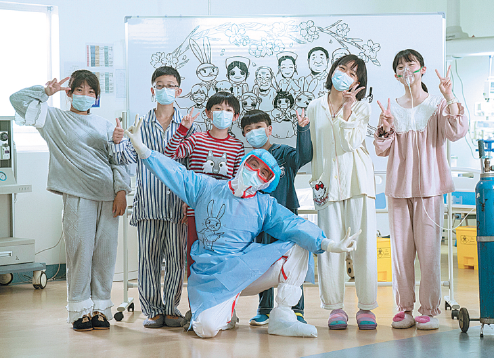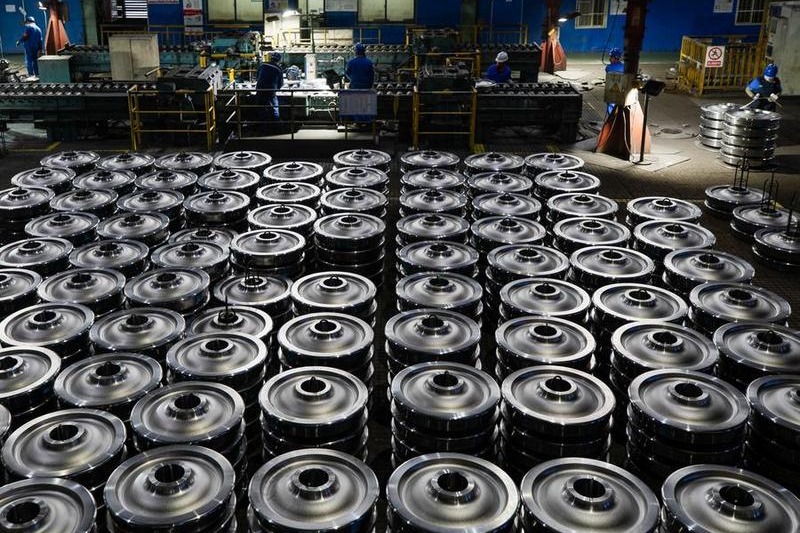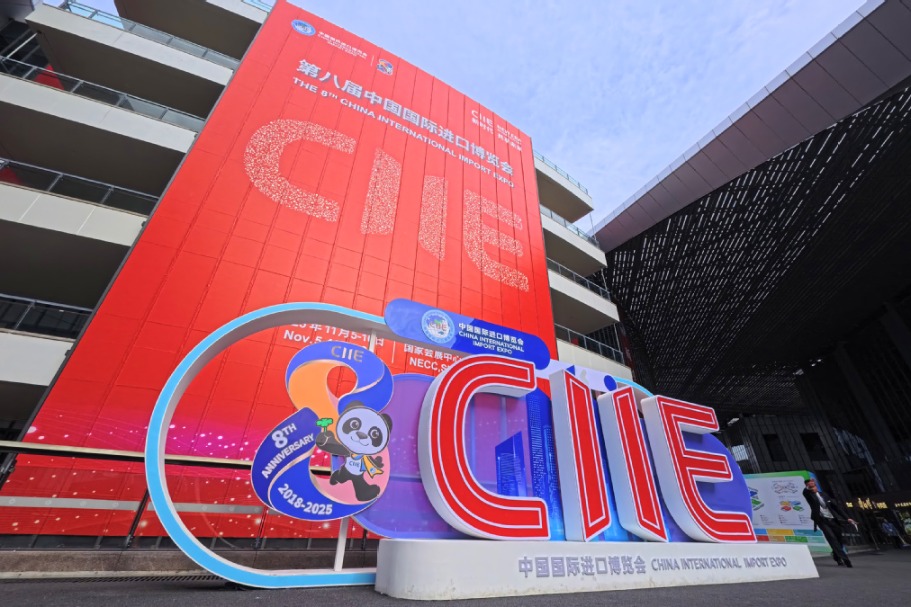Ordinary heroes on the small screen
A new TV drama chronicles how regular people joined the fight against COVID-19 from the front line in Wuhan during the outbreak's early days, Xu Fan reports.

China's first TV series to commemorate the country's fight against COVID-19-Heroes in Harm's Way-recently aired on China Central Television, evoking the collective memory of Chinese unity in battling the pandemic.
The anthological drama produced by China Media Group, the country's largest broadcaster, consists of 14 episodes. Every two episodes tell an independent story.
It's set during the lockdown of Hubei's provincial capital, Wuhan, the Chinese city hit hardest by the outbreak. The serial is based on true stories.
Over 40 veteran and young actors perform as ordinary people, such as medical workers, volunteers and community workers, who acted like heroes during the epidemic, displaying devotion and courage to save lives and confront death on the front line.
Director Ju Xingmao says he feels proud to participate in the project, since he has long hoped to "do something for Wuhan".
"All of us empathize with the feelings of people who resided and worked in Wuhan when the city was going all out to fight the epidemic," Ju says.
"Like others, I was self-isolated at home under the quarantine protocols earlier this year. So, I spent most of my time watching TV news, closely following what was happening in Wuhan," he recalls.
"Touching stories and heroes emerged every day. I struggled to hold back tears daily."
The production schedule was tight. The crew started shooting in late May.
Different teams shot the seven stories in various locations, including Beijing, Tianjin and Hengdian World Studios, the country's largest film-and-television shooting base, in Zhejiang province.
The crew underwent COVID-19 tests several times before they began working.
Despite time constraints, they worked feverishly to create realistic portrayals, including building a replica of Huoshenshan Hospital, one of two makeshift hospitals built to receive Wuhan's COVID-19 patients, and recruiting up to 2,000 extras for some scenes.
"All of the main actors are professional and devoted," Ju says.
"Most chose to forfeit their pay as a salute to the heroes who fought the epidemic on the ground. Most of our crew members only slept a few hours a night to ensure filming could be finished by the deadline."
Since the main characters wear masks and protective outfits in most scenes, the actors had to express their joy and sorrow using their eyes. Special cameras tailored for close-up scenes capture their facial expressions in some shots, Ju adds.
To make it convincing from the medical perspective, the crew also got support from several hospitals, such as receiving permission to use some of their wards and inviting doctors to serve as consultants for hospital scenes.
"We requested guidance in all the aspects, from injections to first aid. Our cast and crew also watched a lot of video clips to immerse ourselves in the situation," Ju recalls.
Ju has worked in China's television industry for over 20 years. He led the directors' team and helmed three of the seven stories.
"Every story has its own tone," he says.
For instance, the first episode-about a Beijing military hospital's doctor, who bids farewell to her family on the eve of Spring Festival to help in Wuhan-is told with an anxious pitch, reflecting the collective emotions in the outbreak's earliest days.
The series also portrays brave and optimistic youth.
The third episode, The Amazing Rabbit Uncle, for example, centers on a young cartoonist stranded in Wuhan. The story follows his unlikely journey to volunteer as a cleaner in a local hospital, who cheers up children infected with the novel coronavirus with his heartwarming paintings.
"In this episode, we tried to add some animations to create a lighthearted tone," Ju says.
One of the biggest challenges was filming a railway scene for the episode.
The crew's 60-odd members had to ride a bullet train from Beijing to Qingdao, shooting at a transit station for less than 30 minutes.
In early February, Wuhan built two makeshift hospitals-Huoshenshan and Leishenshan-with a total capacity of 2,600 beds in around 10 days. Besides, the city transformed large venues into 16 makeshift hospitals, which were used to treat patients infected with the novel coronavirus but showed mild symptoms.
This enhanced local confidence in epidemic control and eased pressure on hospitals.
This is also featured in the series, with one episode revolving around doctors and patients at one of the mobile cabin hospitals.
Communication University of China professor of television-program research Li Shengli says the drama will earn significant status in the history of Chinese TV, despite some shortcomings mainly due to time constraints in its creation.
"China's TV screens have long been dominated by powerful people, from emperors to tycoons," Li says.
"But this drama highlights the contributions and dedication of ordinary people-the heroes of our era-in China's early efforts to fight the epidemic."


Today's Top News
- Supercarrier to be put through paces
- Game changers for China's sports industry
- Nation drives global energy transition
- Tariff-troubled US fears not-so-happy holidays
- 'Looking China' brings American youth closer to Chinese culture
- National Games start new chapter






























